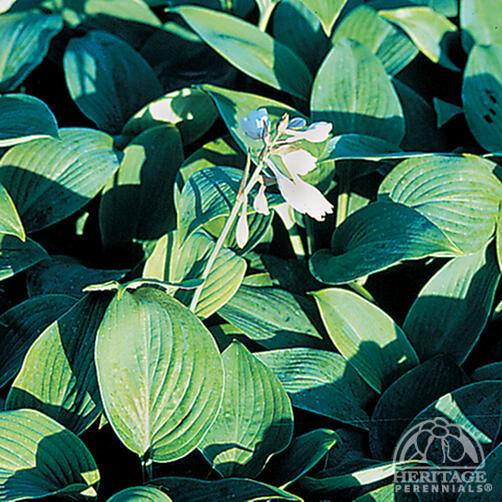Hosta ‘Blue Mammoth’
Plant number: 1.278.960Hosta are among the most popular of perennials for shady areas, with hundreds of varieties now readily available. Plants form a sturdy mound of foliage, topped with lily-like blooms. This big specimen selection has very large chalky-blue leaves, heavily quilted. White flowers appear in July. Also good for planting in mixed containers or tubs. Hosta go completely dormant in the fall, and the dying foliage can be removed any time before mid spring. Easily divided in either spring or fall, but plants may be left alone for years. Excellent slug resistance. Give this plenty of room. While deer enjoy eating Hosta, this variety may be slightly less palatable to deer than others. Further details for |
| All 302 results here | Alphabetical list of all 4,000+ perennials here |
Hosta ‘Blue Mammoth’
Plant number: 1.278.960Hosta are among the most popular of perennials for shady areas, with hundreds of varieties now readily available. Plants form a sturdy mound of foliage, topped with lily-like blooms. This big specimen selection has very large chalky-blue leaves, heavily quilted. White flowers appear in July. Also good for planting in mixed containers or tubs. Hosta go completely dormant in the fall, and the dying foliage can be removed any time before mid spring. Easily divided in either spring or fall, but plants may be left alone for years. Excellent slug resistance. Give this plenty of room. While deer enjoy eating Hosta, this variety may be slightly less palatable to deer than others. Further details for |






